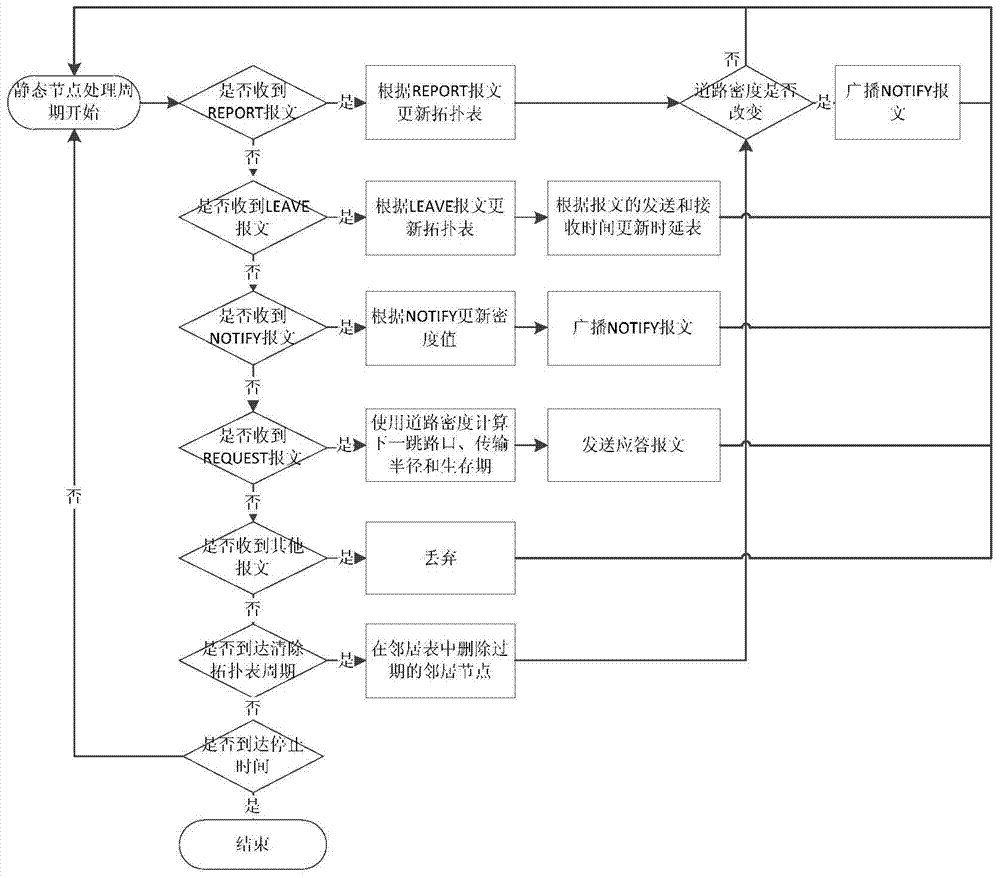In-vehicle network unicast routing method self-adapted to vehicle density
A vehicle density and vehicle network technology, applied in the field of vehicle network unicast routing and vehicle density adaptive vehicle network unicast routing, which can solve the problems of increased delay, reduced broadcast frequency, and large packet loss rate.
- Summary
- Abstract
- Description
- Claims
- Application Information
AI Technical Summary
Problems solved by technology
Method used
Image
Examples
Embodiment Construction
[0169] The present invention will be further described in detail below in conjunction with the accompanying drawings.
[0170] Such as image 3 As shown, any mobile node MN1 needs to send a data message to MN3. When MN1 moves to SN1, it sends a routing request to SN1. A REPLY message is generated during the lifetime of the data message and sent to MN1. MN1 finds the next-hop node closest to SN1 among the neighbor nodes, that is, MN2, and forwards the data message to MN2. MN2 continues routing and finally sends it to MN3.
[0171] If MN1 is on the RD0 road, send to SN0 Send to SN1 Otherwise, if MN1 leaves RD0, send to SN0 message.
[0172] If MN1 is on RD1 road, send to SN1 Send to SN2 Otherwise, if MN1 leaves RD1, send to SN1 message.
[0173] (1) see figure 1 Figure and image 3 As shown, in the vehicle network unicast routing method for adaptive vehicle density, the routing process of any mobile node MN1 is shown in the following steps:
[0174] Step M-0-1: T...
PUM
 Login to View More
Login to View More Abstract
Description
Claims
Application Information
 Login to View More
Login to View More - R&D
- Intellectual Property
- Life Sciences
- Materials
- Tech Scout
- Unparalleled Data Quality
- Higher Quality Content
- 60% Fewer Hallucinations
Browse by: Latest US Patents, China's latest patents, Technical Efficacy Thesaurus, Application Domain, Technology Topic, Popular Technical Reports.
© 2025 PatSnap. All rights reserved.Legal|Privacy policy|Modern Slavery Act Transparency Statement|Sitemap|About US| Contact US: help@patsnap.com



